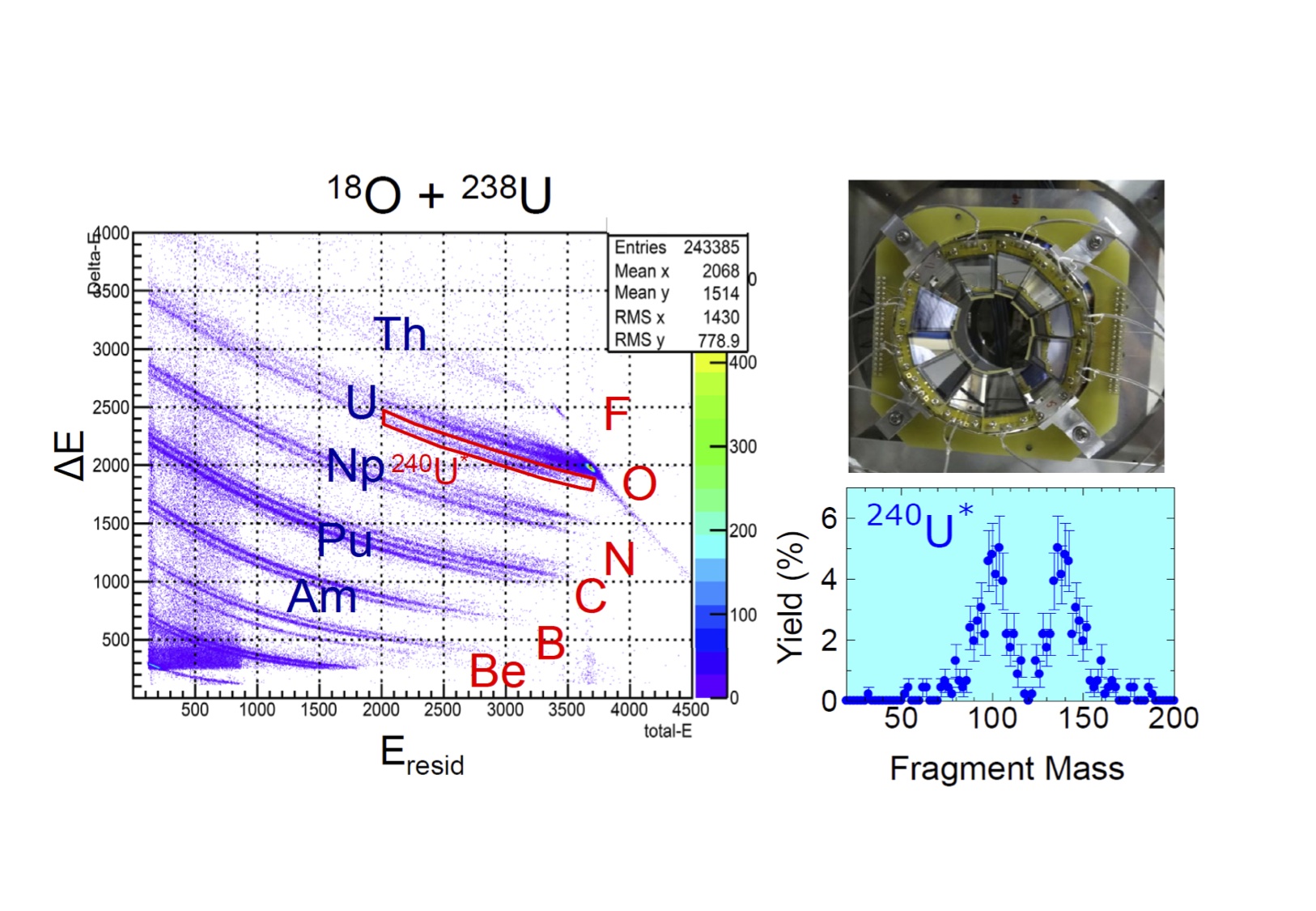Outline of Our Research
The research objective of our group is to investigate heavy-ion induced reactions such as nucleon-transfer and fusion reactions.

Fig. 1: Distribution of fission fragments on mass and total kinetic energy for the low energy fission of 180Hg. The result shows the new type of mass-asymmetric fission.
Research in Shell Evolution of Exotic Heavy Nuclei
Nuclei are finite many-body systems regulated by the laws of quantum mechanics and interactions of neutrons and protons. Deeper understanding of nuclear structure would open wider variety of applications. It also would help to solve several issues inherent to using atomic energy such as nuclear waste and management for reactor safety. The shell structure of nuclei has substantial effects on nuclear mass, nuclear decay, and nuclear reactions. We have investigated nuclear reactions and the associated shell structure. We produced heavy neutron- and proton-rich nuclei in Hg to super-heavy element region, and their nuclear decay has been studied theoretically and experimentally. In this campaign, we found a new fission mechanism in the proton-rich nucleus 180Hg. The experimental data showed that the concepts for fission which are widely used to explain the fissions of typical actinide nuclei cannot be applied to that of 180Hg (Fig.1). The results also indicated the need to explore unstable nuclei to obtain more universal idea in nuclear shell structure. Our group is now pursuing fission studies of very exotic nuclei. Our scope also includes exploration of new shell phenomena in unstable nuclei located far from the beta-stable isotopes, which can appear for example in the superallowed alpha decay around the proton-rich nucleus 100Sn. Development of a theoretical model with high universality is also our issue. Our experiments use both JAEA tandem facility and other heavy-ion accelerator facilities around the world in international collaborations. Super-computers installed at JAEA supports theoretical calculations.

Fig. 2: Fission fragment mass distributions: These data are obtained in one heavy-ion (transfer) reaction.
Method: Transfer reaction
A method applicable to measure reaction cros sections of unstable nuclei will be developed. It will produce the same compound nucleus as desired reaction by using different combintion of targat and projectile, mostly by multi-nucleon ransfer reaction, and we measure decay probabilitis to specific channel. .